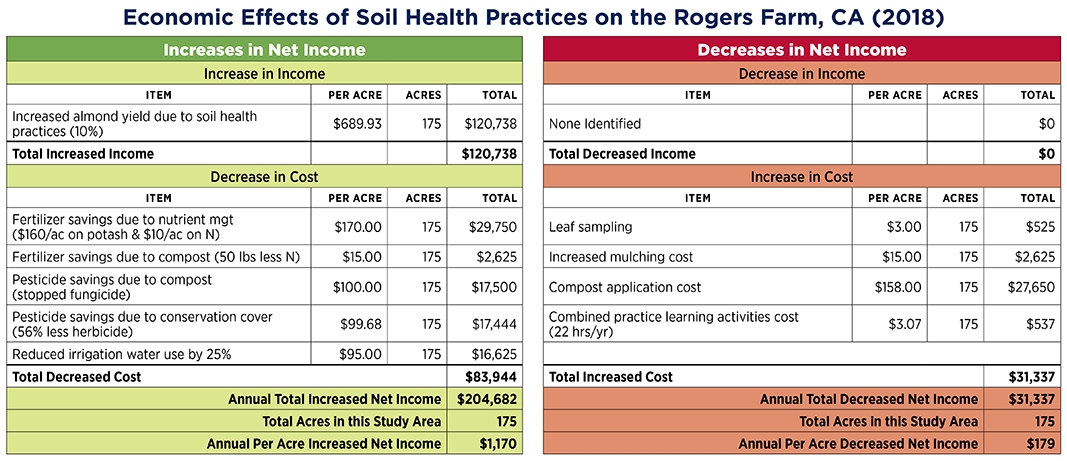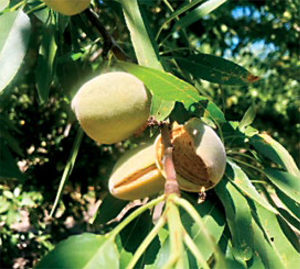Nora Goldstein
Tom Rogers and his brother Dan grow almonds on 175 acres of flat, sandy loam soils near Madera, California. A Soil Health Case Study prepared by the American Farmland Trust and the U.S. Department of Agriculture Natural Resources Conservation Service (NRCS) describes the range of practices implemented on the almond farm that have successfully reduced chemical inputs and increased water conservation:
- To conserve water, the irrigation system was converted from flood to double-line drip on all but 22 acres, allowing Rogers to apply water and fertilizer more efficiently through fertigation.
- In 2009, the Rogers began applying compost, mulching the orchard prunings, and implementing nutrient management to improve tree and soil health.
- In 2018, the weed and native plant vegetation started being maintained for conservation cover.
 As a result of these practices, Rogers reports improved soil tilth, water infiltration, water holding capacity, and more beneficial insects leading to decreased costs for pesticides (72%), fertilizer (55%), and irrigation (25%). Partial budgeting was used to estimate the marginal benefits and costs of adopting nutrient management, cover crops, mulching, and compost application in the Rogers’ orchard. Net income increased by $991/acre/year or by $173,345 annually on the 175 acres, achieving a 553% return on investment. The Rogers believe these practices have improved almond yields — since 2009, average annual yield has increased 10% from 2,730 to 3,000 pounds/acre.
As a result of these practices, Rogers reports improved soil tilth, water infiltration, water holding capacity, and more beneficial insects leading to decreased costs for pesticides (72%), fertilizer (55%), and irrigation (25%). Partial budgeting was used to estimate the marginal benefits and costs of adopting nutrient management, cover crops, mulching, and compost application in the Rogers’ orchard. Net income increased by $991/acre/year or by $173,345 annually on the 175 acres, achieving a 553% return on investment. The Rogers believe these practices have improved almond yields — since 2009, average annual yield has increased 10% from 2,730 to 3,000 pounds/acre.
Mulching, composting, and conservation cover also have contributed to improvements in soil health. The shredded wood deposited on the soil surface by mulching tree prunings eventually decomposes into organic matter, and air quality has improved from no longer burning the prunings. Use of a shredder has a net increased cost of $15/acre/year over the cost of burning. Adding cow manure and green waste compost to the soil costs $158/acre annually. Rich in primary and micronutrients, compost increases microbial activity, adds 50 pounds of nitrogen per acre every year, and eliminates potassium purchases. Improved tree health from composting also helped eliminate fungicide applications during the last three years, saving $100/acre/year. Due to the soil’s better water holding capacity, irrigation has been reduced, saving $95/acre annually in decreased water and pumping costs.














